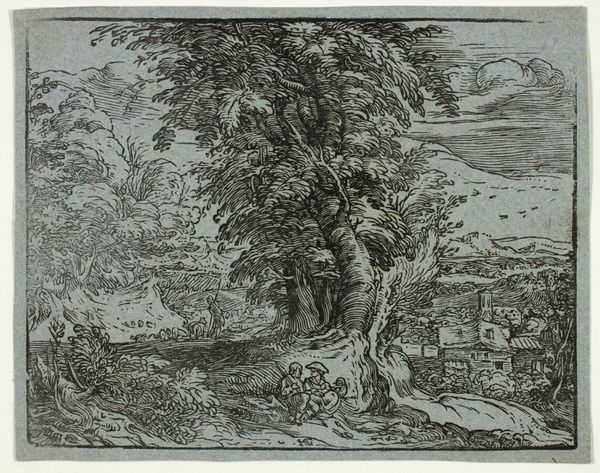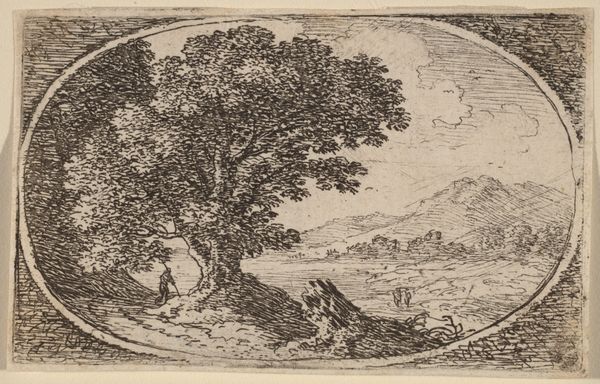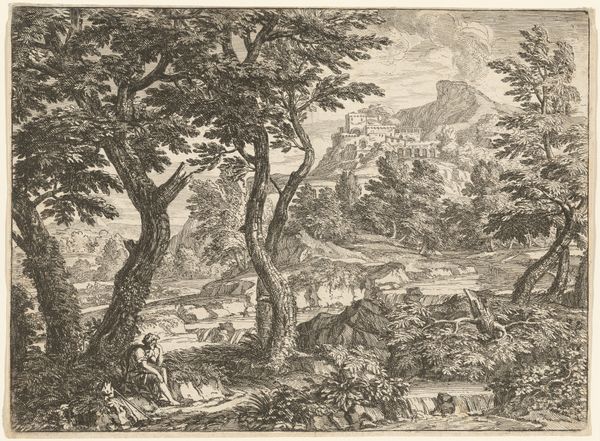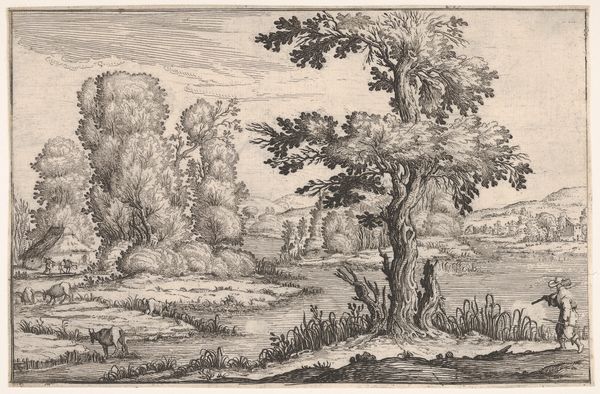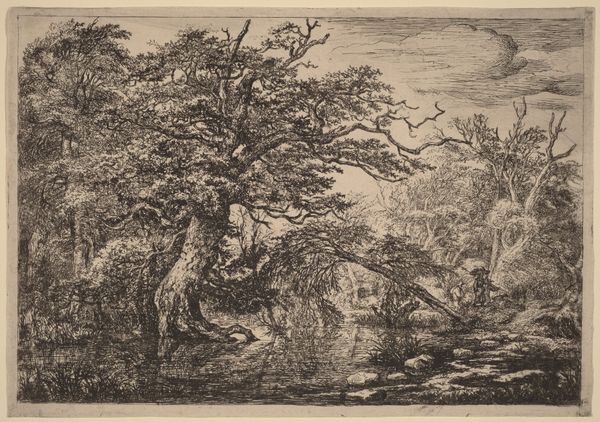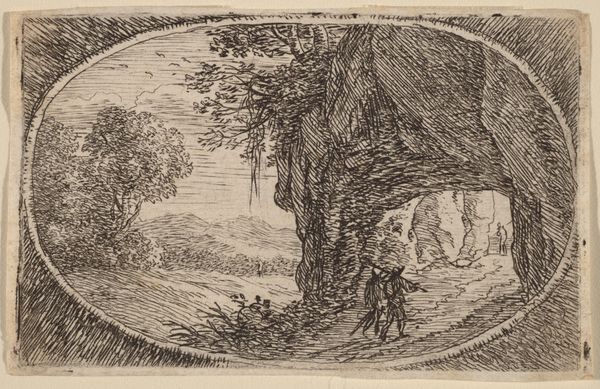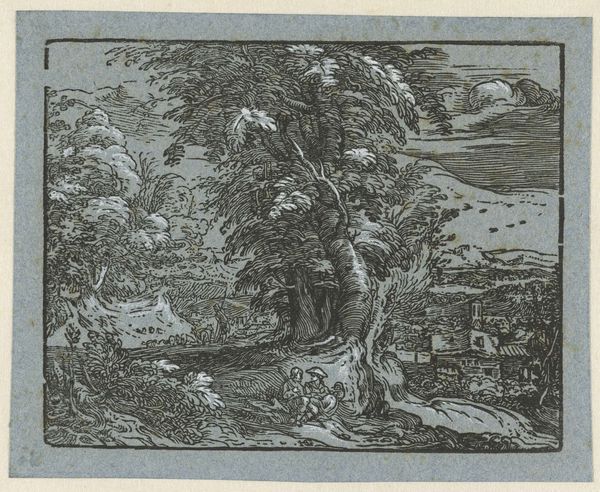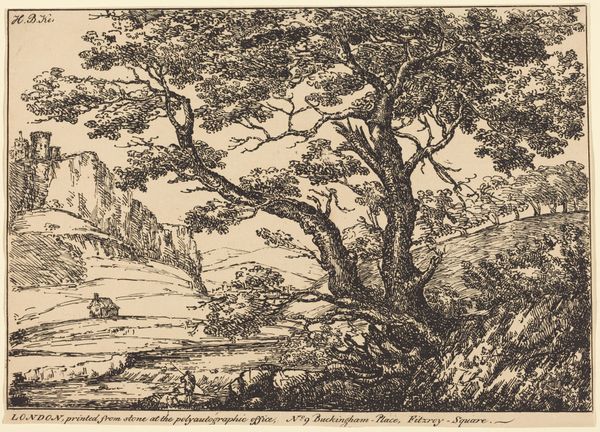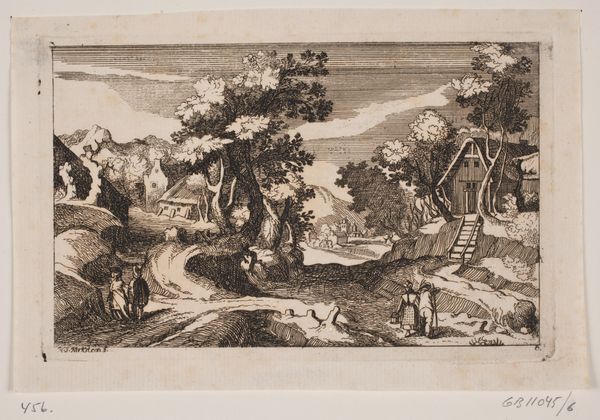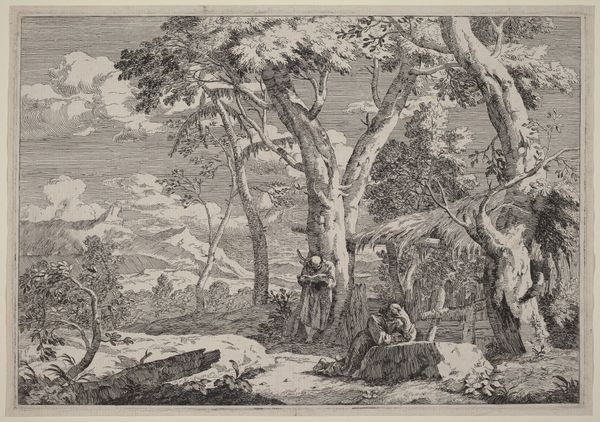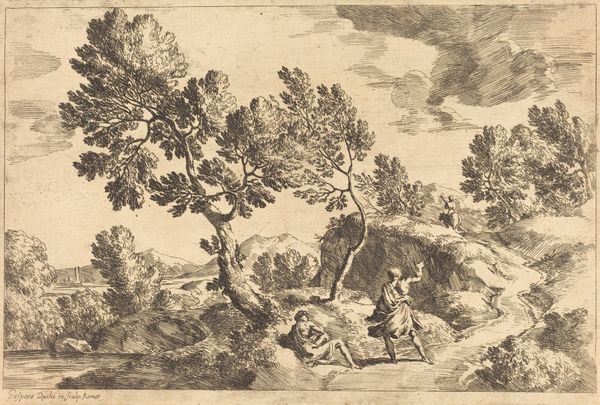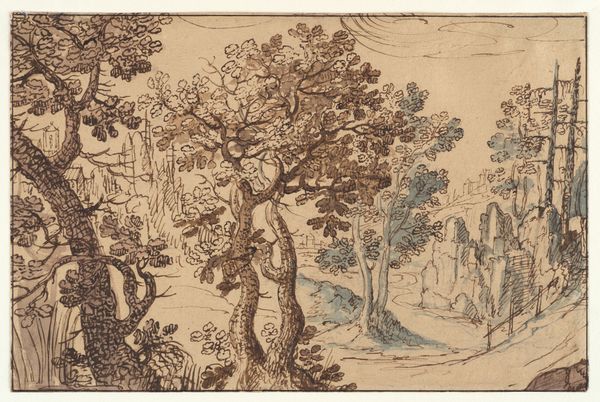
print, etching, engraving
#
ink painting
# print
#
etching
#
landscape
#
mannerism
#
engraving
Dimensions: sheet: 11.4 × 14.3 cm (4 1/2 × 5 5/8 in.)
Copyright: National Gallery of Art: CC0 1.0
Curator: This is Hendrick Goltzius' "Landscape with a Shepherd Couple," dating from around 1592 to 1595. It's a print, combining etching and engraving. What springs to mind for you? Editor: Overwhelming, almost claustrophobic! The landscape is so detailed, every leaf seems accounted for. It feels more like an ornate tapestry than a peaceful vista. Curator: That's the Mannerist style for you, an excess of detail and a love of artifice. Landscape isn’t just landscape, it’s a stage for… something more. In this case, a rather idealized pastoral scene. Look closely at the shepherd couple. Editor: Oh, right there under the tree. It seems like they're enjoying some private time, in this idealized countryside. But it is curious how tiny and sort of insignificant they appear, dominated by the sheer size of everything. Is this a visual metaphor or...? Curator: Possibly. Consider the era. Late 16th century, the Dutch Republic finding its feet, literally reclaiming land from the sea. There's a sense that nature, tamed or wild, is a powerful force, dwarfing humanity even in its idyllic moments. The detailed lines in etching allow this level of intricacy, the human figure seems quite overwhelmed with it. Editor: I suppose that overwhelming quality could also speak to the religious and political upheavals of the time. Nature endures, regardless of human drama. This couple's peace seems almost defiant amidst it. Are there other readings that might resonate given the artist’s context? Curator: Certainly. Goltzius himself underwent a spiritual crisis that heavily influenced his artistic trajectory. So you can argue that nature, represented by those detailed, almost obsessive lines, becomes a stand-in for the divine. Something eternal against the fleeting dramas of human existence. Editor: I’m struck how the density actually adds to that feeling of timelessness, doesn't it? It’s not a fleeting impression, but something meticulously constructed, that begs deeper understanding and contemplation. Curator: Exactly! And that’s where art truly transcends its immediate appeal, drawing us into richer contemplation of its era and what it mirrors about our own condition.
Comments
No comments
Be the first to comment and join the conversation on the ultimate creative platform.
